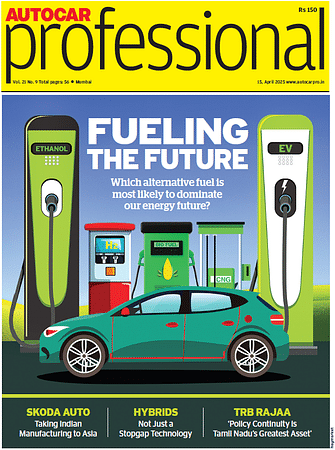Ergonomists help Ford reduce production line injuries by 70%
Ergonomics research, assembly improvements and lift-assist technologies are helping automakers like Ford to reduce its assembly line employee injury rate.
Ergonomics research, assembly improvements and lift-assist technologies are helping automakers like Ford to reduce its assembly line employee injury rate.
Since 2003, Ford Motor Co has reduced the injury rate by 70 percent for its more than 50,000 ‘industrial athletes’ in the US, and many more around the world, through new ergonomics technology, lift-assist devices, workstation redesign and data-driven process changes.
“We refer to our assembly line employees as ‘industrial athletes’, due to the physical nature of the job,” said Allison Stephens, technical leader for assembly ergonomics at Ford. “We have made data-driven decisions through ergonomics testing that has led to safer vehicle production processes and resulted in greater protection for our employees.”
While automotive designers focus on a vehicle’s look and the customer experience, Ford virtual manufacturing experts focus on two key areas – design feasibility and the safety of employees on the production line.
Two to three years in advance of a new-vehicle launch, Ford ergonomists virtually simulate the build process using both human and virtual test subjects to assess the physical labor needed to build a vehicle. In an effort to reduce and help prevent employee fatigue, strain and injury, the data collected is used to guide engineering solutions prior to implementing tasks on the production floor.
CORE VIRTUAL MANUFACTURING TECHNOLOGIES
On average, Ford ergonomists complete more than 900 virtual assembly task assessments per new-vehicle launch, centered on three core technologies – full-body motion capture, 3D printing and immersive virtual reality. Each provides critical data used to evaluate the overall safety of the assembly process for employees, while maintaining high vehicle quality for customers.
Virtual manufacturing experts at Ford use the following tools:
Full-body motion capture provides data on how an employee uses his or her body to move and complete tasks. Through more than 52 motion-capture markers placed on an employee’s arms, back, legs and torso, ergonomists can record more than 5,000 data points to evaluate muscle strength and weakness, joint strain and body imbalance. Similar technology is used across professional sports to improve athletes’ techniques and help them avoid injury
3D printing is used by an ergonomist to validate hand clearance in the vehicle assembly process in those instances in which virtual simulation yields unclear results. Employees with various hand sizes use the 3D-printed model to test how tight the space will be in vehicle assembly – which helps to drive better production decisions
Immersive virtual reality uses a 23-camera motion-capture system and head-mounted display to virtually immerse an employee in a future workstation. Then, the employee’s movements are evaluated to determine task feasibility and proficiency
“Motion tracking technology has been used for more than 30 years to quantifiably assess the technique of athletes and reveal where they may be susceptible to injury from overuse or from forces that will damage tissues,” said Gary Scheirman, vice president for applications engineering, Motion Analysis Corporation. “Using similar technology, Ford can develop state-of-the-art, safe working environments for its employees and produce better vehicles for its customers.”
To date, Ford ergonomists have worked on more than 100 new-vehicle launches globally using virtual manufacturing tools – most recently the 2015 Mustang, F-150, Edge and 2016 Explorer. The company says that through significant investments in the program, not only has it achieved a reduction in employee injury rates but it has seen a 90 percent reduction in such ergonomic issues as overextended movements, difficult hand clearance and tasks involving hard-to-install parts.
“Our goal is to provide a healthy, safe and productive work environment at our Ford manufacturing facilities worldwide,” said Michael Torolski, Ford executive director, Vehicle Operations Manufacturing Engineering. “The ergonomics and virtual manufacturing processes support our injury reduction strategy and enable early validation of production-technology changes.”
RELATED ARTICLES
Horse Powertrain reveals hybrid conversion for electric cars
Engine-making joint venture of Geely and the Renault Group announces new hybrid powertrain that fits into the same space...
Aisin to produce hybrid motor for Mitsubishi in Thailand
The hybrid drive motor and gearbox, will be produced at Aisin Powertrain (Thailand) Co for use in the Mitsubishi XForce ...
GM reports strong Q1 sales in China, demand for EVs and hybrids surges 53%
General Motors and its joint ventures in China have sold more than 442,000 units between January and March 2025.






 By Autocar Professional Bureau
By Autocar Professional Bureau
 17 Jul 2015
17 Jul 2015
 4821 Views
4821 Views


















